But sadly, over the years, they have not always been looked after with due care.
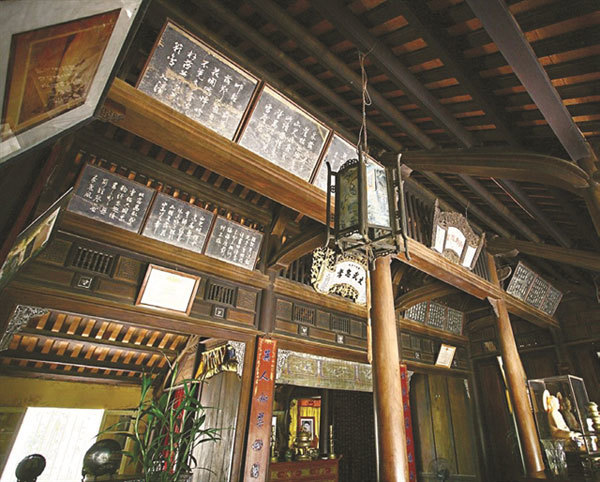 |
| Wooden house, or Hue’s traditional 'rường' house, is a structure with beams and pillars enforced by timber and bamboo connectors, without the use of any iron nails. Photo tcnhadep.com |
However, they are now set to become part of a programme that will restore the houses (locally called rường houses) to keep the city's heritage and promote tourism.
To preserve the cultural values of the houses, the central province of Thua Thien-Hue is aiming to build a brand associated with the city’s unique tourism, preserving their heritage and making them a symbol of the ancient royal capital, according to a Ministry of Culture, Sports and Tourism report.
Rường houses are Hue’s traditional wooden houses and have a unique structure with beams and pillars enforced by timber and bamboo connectors, without the use of any iron nails.
Phan Thanh Hai, director of the Thua Thien-Hue Department of Culture and Sports, highlighted the traditional accommodation, saying the houses were inextricably linked to the history of the city.
“It is a cultural space, a constituent and essential part of Hue culture. In the past, most residential areas in the imperial city of Hue, from the palaces in the inner citadel to the houses of the higher or lower classes, were built in the rường style,” said Hai, who was also a former director of the Hue Monuments Conservation Centre.
Hai said Hue’s wooden houses were respectful, solemn, but cosy private rooms mixed with the classical style of the imperial palace.
The houses were usually built with ornate gardens, often designed as elaborately as the houses themselves.
Although the architectural works occupy a modest proportion of the property, they manifest as a perfect space, with an entire complex including the main house, outbuildings, shrines, partition screens and gates.
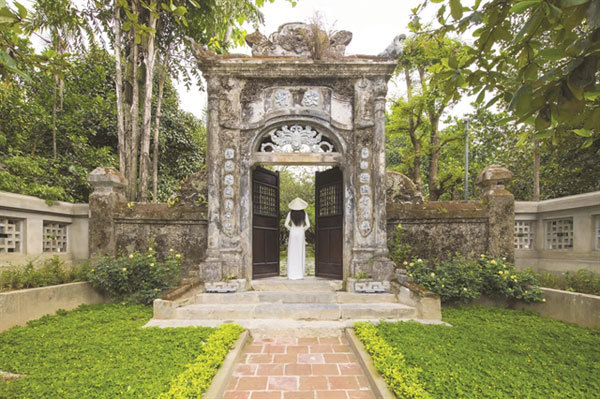 |
| Despite the ups and downs of history, An Hien House is a remarkable building that has stood the test of time. -- Photo silkpathhotel.com |
The design and architecture are self-contained, and the main house is always in the central position, said Hai.
He said people only dared to build a ruong house only when they reached the age of fifties. The house and the attached garden would be carefully protected because they represented the owner’s identity, culture and social position.
Ho Thang, director of the city's Science and Technology Department, said that what made the houses unique was the construction materials, including jackfruit, hollong and vatica wood.
Hue is home to much typical 19th-century feudal architecture such as palaces, pagodas, temples, tombs and residences.
Compared to the wooden house style in northern Vietnam, Hue’s ruong houses are often thinner and different in style. Thin pillars and a roof decorated with dragons or stylised flowers and leaves can be found in such buildings, according to Thang.
He was speaking at a scientific workshop themed “Conserving and Promoting Hue Cultural Values in Building the Brand of rường houses,” recently held in Hue by the Science and Technology Department.
The event was aimed at promoting the cultural values of Hue’s wooden houses, making them a symbol of the ancient capital.
Promotion and conservation
Based on the opinions of many experts, the branding of ruong houses is expected to be conserved and developed along with other famous features of Hue.
Ruong houses are said to be the local 'intellectual products.' They resulted from people selecting optimal technical solutions and conveying an all-encompassing architectural style. However, many have been damaged over the years, with structures degraded due to ineffective conservation, too much tourism or poor management.
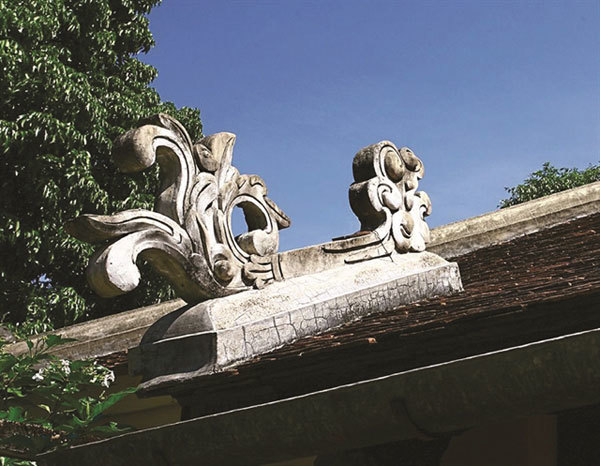 |
| Decorative details on the roof of a wooden house in Hue. -- Photo tcnhadep.com |
The People’s Council of Thua Thien-Hue Province in 2006 issued a resolution on protecting Hue wooden houses for 2006-2010 and continued it again 2015-2020. However, as the number for conservation was too large and supporting policies had not been appropriately applied, many owners, particularly those of large houses, faced difficulties in preservation.
Officials said many challenges appeared, including those relating to owners who were often co-heirs or inheritance representatives.
Experts say an action plan should be made to develop the ruong house’s brand (geographical indication or shared label). Artisans, house owners, and businesses should be brought under “one roof” to protect and manage the famed houses.
To develop brand recognition and widely advertise across the country and abroad, some experts at the workshop suggested policies should be adopted to ensure the preservation and development of wooden houses by promoting sustainable materials in the restoration, vocational training and site planning for units restoring such old-style houses.
Surveys on the architecture, cultural and historical value of ruong houses should be conducted to set up funding programmes for conservation and protection of heritage.
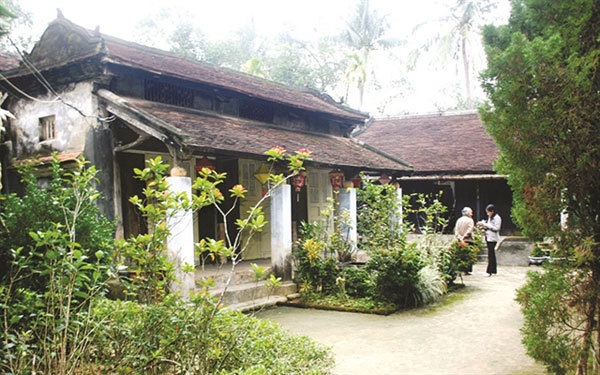 |
| A corner in the wooden house of Le Thi Tuy at 2/3 Phu Mong Street, Kim Long Ward, Hue City. Photo bvhttdl.gov.vn |
A ruong house museum is expected to be established to boost tourism. The heritage should be included in the tourism strategy, contributing to publicising Hue culture and generating income for owners.
Nguyen Thi Ai Van, vice chairwoman of the provincial People’s Council, said the conservation work must be practical to help promote heritage values.
“‘Promote’ here means to work with tourism so that to help ruong houses ‘exist’ and be passed down from generation to generation, and avoid deformation and concretisation,” Van said.
An Hien garden house
Traditional wooden houses are a Hue cultural heritage, and among them An Hien is one of the finest examples.
Located at 58 Nguyen Phuc Nguyen, Kim Long Ward, Hue City, not far from Thien Mu Pagoda and Hue Imperial Citadel, the famous ruong house faces the romantic landscape of the Huong River, similar to other ancient architecture built on the northern bank.
It was cited in historical documents about Hue in the mid-17th century when Lord Nguyen Phuc Lan selected Kim Long as a centre of Dang Trong (the Southern Realm), during what was a golden period.
Under Nguyen Dynasty (1802-1945), Phu Xuan became the centre of Dang Trong and later, the capital of Vietnam. More and more royals and noble families built residencies in Kim Long, and An Hien house was among them.
People cannot avoid ups and downs no matter how powerful and wealthy they are, and so it has been with the owners of An Hien house, with the residence passing through many different owners.
According to a document recording the history of An Hien, its very first owner was the daughter of Emperor Duc Duc in 1883. By 1895, it was under the management of Pham Dang Khanh who started to renovate it.
The house passed through many hands from 1975 to 1997. For some time, it was known as Madame Tuan Chi’s house, belonging to Governor Nguyen Dinh Chi’s wife. Here, she received hundreds of delegations, including foreign VIPs, on their visits to Hue.
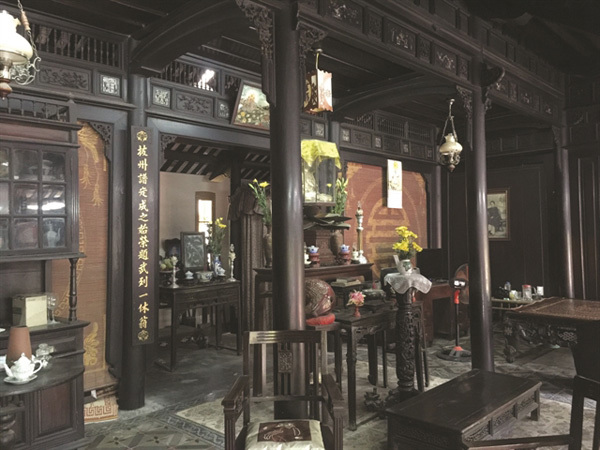 |
| Inside a wooden house. Photo nhagothachthat.net |
In 2018, the house covering 4,600sq.m was transferred to the Silk Path Hotel Company for management and restoration. Many Hue residents were worried commercial use would damage the old style of the house, but fortunately, the company restored the unique values effectively.
Provided the restoration of ruong houses is carried out with due care and respect, these beautiful ancient buildings will remain the pride of the Hue people forever.
Source: Vietnam News
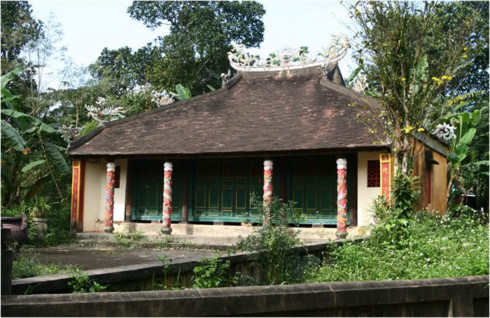
Ancient Ruong house needs urgent protection
Various measures have been undertaken to preserve and protect ancient Ruong garden houses in central Thua Thien Hue province.
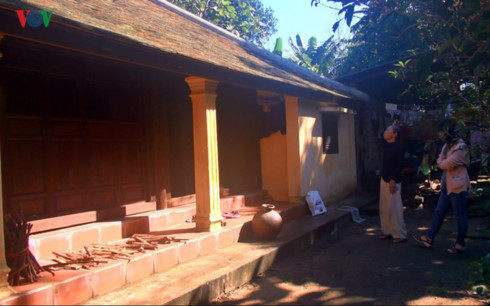
Hue preserves Ruong houses, an ancient beauty
Hue’s ancient Ruong houses have contributed to the former imperial city's architectural beauty.